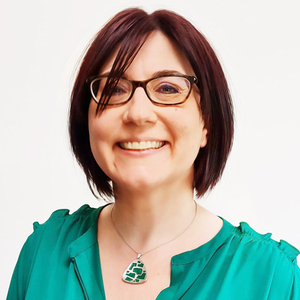Insights
INSIGHTS
All Topics
A guide to ethical recruitment
29 Feb 2024by Denise Atkins
We take a look at the practices and protocols charities might want to put in place in order to keep hiring ethical – and why it matters
When hiring, it’s important to make sure our recruitment is ethical.
As charities we are rightly held to high standards. For too long, the sector hasn’t reflected the diverse communities it’s there to serve. Movements like #CharitySoWhite and #CharitySoStraight are driving awareness of the need for a more diverse charity sector, and there’s work to be done.
Of course, we are all governed by the Equality Act 2010. That means it’s against the law to discriminate against anyone on the basis of a protected characteristic – such as gender, race, or age. Disabled employees are also entitled to request reasonable adjustments to accommodate their needs. That’s the bare minimum we have to do.
But truly ethical recruitment goes much further. We explore more below.
Good for business
The most ethical employers work hard to ensure a level playing field for all candidates, and there’s plenty of evidence that a diverse workforce is good for business too. Diversity can lead to better decision-making, boost creativity and innovation, and create opportunities for professional growth.
Many of us are struggling to fill vacancies, so opening your recruitment to as many people as possible makes sense. So, what are some of the steps we can take to ensure an equitable hiring process?
Beating unconscious bias
Everyone has some unconscious bias, so it’s important to acknowledge it and minimise its effects. It’s a good idea for everyone involved in recruitment decision-making to take part in some intersectional diversity training, to become more aware of their own biases. This starts at the very top.
In a perfect world, a bit of diversity training would be all you’d need. But in reality, we all need systems and processes to support ethical recruitment too. Only then can you see your efforts reflected in a more diverse workplace.
Know your weaknesses
It’s important to acknowledge where you currently lack diversity, because then you can look for candidates to plug these gaps. That doesn’t mean giving anyone an unfair advantage or hiring minorities as part of a box-ticking exercise. But it does mean ensuring your pool of candidates reflects the communities you serve and the wider world.
Display your aims with pride
If your current team looks homogenous, it can put potential candidates off applying for jobs. That only worsens the problem. Don’t be afraid to make affirmative statements in your job ads to show that you are trying to change for the better. For instance, a job ad for the Women’s Equality Party (WEP) states:
“…we particularly welcome applications from Black, Asian and Minority Ethnic candidates as these communities are under-represented within WEP at this level.”
At disability equality charity Scope, ads include this statement:
“We… encourage applications from disabled people. We are dedicated to creating a workforce that is a true reflection of the communities we serve. If you are disabled, have the skills, and or the experience to do the job, then we would love to meet you for an interview.”
If you use photography to represent your people, be proactive about making it diverse. It’s OK for your website and social media to reflect how you’d like your team to look, not just how it is now. Don’t let stereotypical views of people in a given role creep into your imagery. Browse libraries like Adobe Stock, Disabled and Here, and Nappy for a more varied bank of photography assets.
To show you welcome people from all walks of life, why not take a voluntary pledge? These include:
By signing up to some of these you demonstrate your willingness to address inequities and you’ll benefit from helpful resources too.
Be realistic in job descriptions
When listing your candidate requirements, question how essential they are. Do applicants really need a degree to do the job? Is a driving license absolutely necessary?
One good thing that came out of the pandemic is an increased flexibility over how and where we work. Bear this in mind when considering what reasonable adjustments you could make to accommodate someone with disabilities or caring responsibilities.
Be open about money
It’s tempting to keep quiet about salaries, but secrecy around pay has only made inequality more entrenched. There’s a growing movement for salary information to be required by law – this is already happening in some parts of the US, and there are plans for a UK pilot scheme. In the charity sector we can take a Show the Salary pledge.
According to research by Liberty Hive, showing the salary can increase the number of applicants by around 67% and speeds up the whole recruitment process by around 50%.
You should also avoid asking candidates for their salary history or expectations. This can perpetuate inequalities, and often disproportionately affects women and minority groups.
Anonymise your applications
A couple of years ago, CharityJob took the important step of supporting anonymous hiring. As part of its Applicant Manager service, CharityJob removes the personal details until first contact. They also stopped accepting job ads without salary information.
If you’re hiring directly, add a gatekeeper to anonymise applications before they pass to the hiring manager for shortlisting.
Open, skills-based, structured recruitment
Advertise all open roles, even if you think you have the perfect internal candidate.
Using skills-based task assessments can show you how someone would really perform in a role far better than their CV alone. And a more structured application and interview process is much fairer than an informal chat. It’s easier to compare candidates when they have all had the same questions.
Use diverse recruitment panels
Adding someone disabled or non-white to your interview panel can boost the diversity of your hiring decisions. This may be effective due to reducing bias, boosting candidates’ confidence, or a combination of effects.
Go beyond the job offer
Once you’ve found your ideal candidate, remember that equity goes beyond your decision to hire them or not. It continues with their compensation package, throughout their induction, and into the opportunities they have as an employee, to develop, grow, and be promoted for their hard work.
Denise Atkins
More on this topic
Related Content
Recommended Products
Our Events
Charity Digital Academy
Our courses aim, in just three hours, to enhance soft skills and hard skills, boost your knowledge of finance and artificial intelligence, and supercharge your digital capabilities. Check out some of the incredible options by clicking here.























